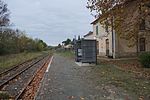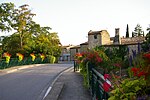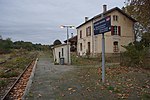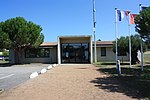Carcassonne (, also US: , French: [kaʁkasɔn] (listen), locally [kaχkaˈsɔnə]; Occitan: Carcassona [kaɾkaˈsunɔ]; Latin: Carcaso) is a French fortified city in the department of Aude, region of Occitania. It is the prefecture of the department.
Inhabited since the Neolithic, Carcassonne is located in the plain of the Aude between historic trade routes, linking the Atlantic to the Mediterranean Sea and the Massif Central to the Pyrénées. Its strategic importance was quickly recognized by the Ancient Romans, who occupied its hilltop until the demise of the Western Roman Empire. In the fifth century, the region of Septimania was taken over by the Visigoths, who founded the city of Carcassonne in the newly established Visigothic Kingdom.
Its citadel, known as the Cité de Carcassonne, is a medieval fortress dating back to the Gallo-Roman period and restored by the theorist and architect Eugène Viollet-le-Duc in 1853. It was added to the UNESCO list of World Heritage Sites in 1997 because of the exceptional preservation and restoration of the medieval citadel. Consequently, Carcassonne relies heavily on tourism but also counts manufacturing and winemaking as some of its other key economic sectors.








